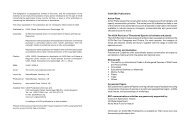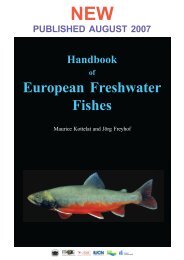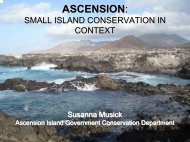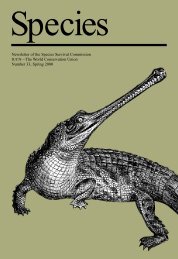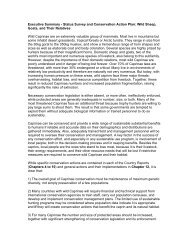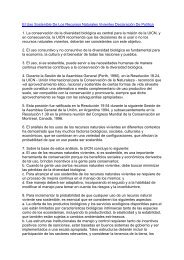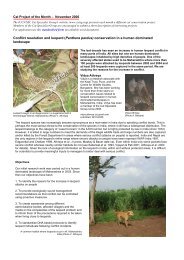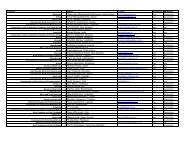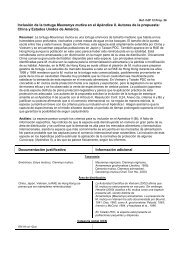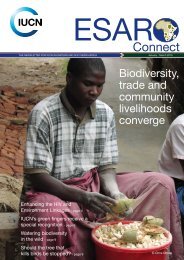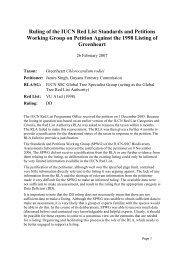Planning education to care for the earth - IUCN Knowledge Network
Planning education to care for the earth - IUCN Knowledge Network
Planning education to care for the earth - IUCN Knowledge Network
Create successful ePaper yourself
Turn your PDF publications into a flip-book with our unique Google optimized e-Paper software.
<strong>Planning</strong> <strong>education</strong> <strong>to</strong> <strong>care</strong> <strong>for</strong> <strong>the</strong> <strong>earth</strong>In 1984, 55% of people were more worried about human healthproblems than <strong>the</strong> environment. The 1990 survey showed that peoplewere very much aware of <strong>the</strong> relationship between environmentalproblems and <strong>the</strong> human state of health.In 1984 more than 50% of people believed that <strong>the</strong> country’seconomic development couldn’t take place without environmentaldamage. The 1990 results, on <strong>the</strong> contrary, showed a populationconcerned by <strong>the</strong> fact that economic development will not be possibleif environmental damage persists (95%).People’s attitudes <strong>to</strong> adopting concrete solutions <strong>for</strong> protecting <strong>the</strong>environment rose from 8% in 1984 <strong>to</strong> 17% in 1990.Encalada, Marco (1990).Sources of fundingThe United States Agency <strong>for</strong> International Development (USAID) providedabout half <strong>the</strong> <strong>to</strong>tal budget of EDUNAT over its life span of 13 years. O<strong>the</strong>rinternational sources contributed 10 percent of resources and localinstitutions some 40 percent. The largest share of operating costs - up <strong>to</strong> 70percent - was <strong>for</strong> materials <strong>for</strong> <strong>the</strong> school system. A minimum input ofinternational technical personnel kept staff costs low.An evaluation of stages one and two of EDUNAT shows that costs were onlyone-fifth of those <strong>for</strong> similar operations in o<strong>the</strong>r Latin American countriesand much lower than <strong>for</strong> projects outside <strong>the</strong> region.ConclusionEDUNAT cannot claim a monopoly of <strong>the</strong> credit <strong>for</strong> changes inenvironmental consciousness in Ecuador over <strong>the</strong> past 13 years. Manyof <strong>the</strong> recent environmental initiatives never<strong>the</strong>less bear <strong>the</strong> stamp ofEDUNAT influence as some of <strong>the</strong> findings of <strong>the</strong> evaluationdemonstrate. The effectiveness of EE cannot be observed in directchanges in <strong>the</strong> environment, but in <strong>the</strong> way individuals and institutionsapply method and procedures and mobilize action which is known <strong>to</strong>bring about change.162



